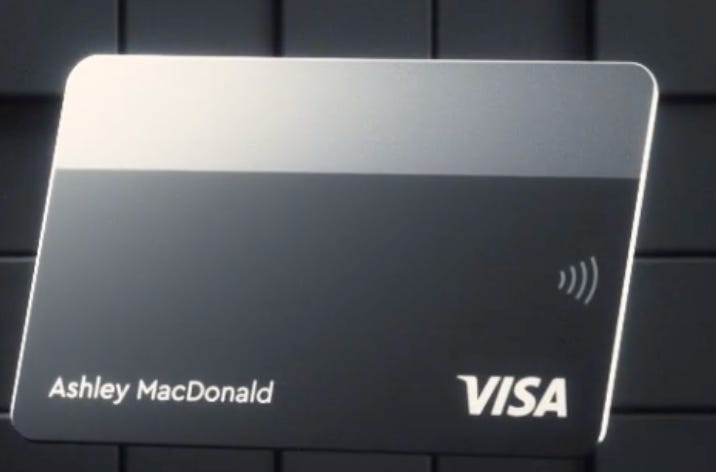June 2023: The competitors you should fear aren’t copying you
Competitors with original roadmaps are more dangerous than those who follow you.
A frequent question when you’re building something is “what if {company name} copies this/does what you’re doing”. On the face of it, the question is about how you would deal with competition. Under the hood, I think a) it’s usually the wrong question to ask about competition (with one caveat) and b) there’s a much more obvious thing to be afraid of.
Back at Cash App, (and particularly when I was helping build the Cash Card), I wasn’t ever really worried about Apple Cash, Chime, or Venmo. At the time, observing their product velocity, and the products they were shipping, I didn’t really believe their products reflected fundamental original insight over and above what was happening in market. This isn’t a knock on those businesses - they are great businesses. They just weren’t trying to ship benefits to consumers that, at the time, struck me as original. At the time, I was convinced Venmo was copying us because they’d always ship the same things that we did, just 9 months later. Maybe this was true, maybe it was ego.
The Apple Card was the first time I saw another fintech product[1] that solved an overlapping need with ours, that I felt reflected truly original insight orthogonal to ours, and took advantage of assets we couldn’t compete with or build. When the Apple Card launched, it was typical Apple; an object of desire, combined with intuitive software, that was already on a billion phones, would be the default ApplePay card on your phone, and benefited from Apple’s materials experience and manufacturing scale. And that object of desire was super hard to create - the card networks fought every attempt to put their brand on the back of the card (I suspect part of the reason Apple went with MasterCard is because Visa wouldn’t cave at first), an absolutely custom chip that literally did not look like something that had been on a payment card before, and a nice, heavy metal card with no numbers on it (again which absolutely no one had seen before). The financial benefits were also interesting, but were incremental - the real novelty was a gorgeous card that everyone loved and talked about, and always on access to the borrower.
Why competitors with original roadmaps are dangerous
The Apple Card was proof that Apple was trying to do something no one else was doing (and something we’d tried and failed to do thus far). When a competitor copies you, you mostly don’t have to worry about them (with one caveat I’ll get to later). Their roadmaps are derivative of yours, and as such you know generally what they’re working on next (because its a variant of what you last shipped). You also already know how well or poorly it’s working (and they do not) and you will have a headstart in optimizing and iterating towards victory. The competitors with original roadmaps are more dangerous; they’re going in a different direction than you, AND they might be right. If they’re right about what customers want, and you’re not, you’ll be behind, and likely have to copy them. And if you’re in a winner take all market, you’re likely toast.
Apple also provides an example of what happens when you are building something original, and you are right. The Apple Card shipped with
laser engraving (which tons of cards were already doing)
edge magstripe (which was a first)
completely custom chip (also a first)
card network logo on the back (rare - I think when they launched it only the Chase Sapphire and the Capital One Venture physical cards had it)
In the time since they launched, basically all fintechs working on premium cards have copied it. Now you see it everywhere. This isn’t a criticism; the edge magstripe literally looks better than the old thing. That being said, Apple shipped something original, and marginal (as in I doubt the edge magstripe had a discernible impact on any success metric), yet it spurred the rest of the industry to follow suit. [2]
Step
Revolut
Cash App
Caveat: Competitors don’t have to win for you to lose
I think this is true with all competition, but its particularly true if you have feature parity and your competitor is well capitalized; it’s possible for a competitor to have a similar or worse product, and outspend you in GTM or customer acquisition, or compete on price.
You might not explicitly lose, but if they compete in the same paid channels as you, they drive up your customer acquisition costs enough to erode enough margin to deprive you of oxygen. The more original your product, or the farther from your competitors you are in terms of benefits, the less likely this is to happen, but if you’re both competing for the same adwords for example, it’s hard to avoid.
A similar thing is true with pricing; a well capitalized competitor with a similar value proposition as you (or even a slightly worse value proposition, where the difference is difficult for customers to discern) can cause death by a thousand cuts; by competing with you in every deal, underpricing you, and winning some of them, thus simultaneously shrinking your TAM, shrinking your growth and poisoning the well with customers in the process. Even if they don’t win over the long term, the reduction in growth impacts your ability to capitalize, compensate employees, attract talent, and invest in the future.
I was wrong about Apple, but it didn’t matter
At the time, my thesis for the Apple Card being successful was:
It was the first card since the Cash Card that was original - they had broken a bunch of card design rules to get it done, and had shipped something that looked like nothing else on the market
With Apple’s distribution, they could convert only a small percent of their wealthy customer base and still have a hit.
The Apple finance team had been seeking a hit for a while, and the AppleCash card and the p2p features in iMessage didn’t seem like massive needlemovers. Credit interchange would be a shot in the arm and would fund them to continue to do original things.
In hindsight, I was wrong. I think it represents a consumer hit (as in Apple’s customer’s like it), but it’s not yet a mature successful business line financially. The Apple Card loan portfolio loses money [3] - if I’m standing in Chase/AmEx’s shoes, I doubt that the Apple Card has made a material difference to their business or that they’ve lost a bunch of customers to it (and the same is true for Cash App - customer base mostly doesn’t overlap and serves different needs). It might also just reflect that consumer financial services has room for lots of winners. All that being said, which other financial product comes installed by default on the device you use the most, and is set up as the default payment instrument in ApplePay? What advantage does that give Apple in the long term? [4]
Thanks to Aaron Frank & Dhanji Prasanna for reading this in draft form.
[1] One other caveat - in hindsight, after companies like Dave, Brigit & EarnIn had scaled, it kind of hit me that they were solving a time to money problem for a consumer base that overlapped heavily with ours, and we had basically missed that opportunity. Ultimately they didn’t pose an existential threat, but it’s possible they might in the future (and that we would have had to follow them).
[2] This points to a potential way to distract competitors: announce things that don’t matter, but seem impactful, so they spend time thinking about it, or ultimately copying you. I’m not generally a fan of spending time thinking about your competitors (vs your customers) but it’s not lost on me that the existence of the copying effect means it’s plausible to do intentionally.
[3] https://9to5mac.com/2023/02/16/apple-card-future-goldmans-sachs-losses/





